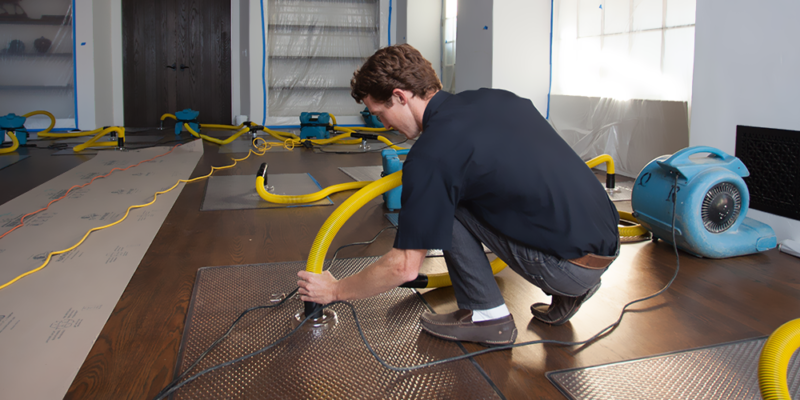Mold is a common problem that can lead to serious health issues and structural damage if left unchecked. It thrives in damp, humid environments and often hides in places that are not easily visible. Knowing how to spot mold in hidden areas of your home can help you take early action and prevent more significant problems down the line. This article will provide you with practical tips and signs to look for to identify mold growth in less obvious places.
Understanding Mold Growth
Mold spores are present everywhere in the environment. They can enter your home through open windows, doors, and even on your clothes and pets. For mold to grow, it needs three key components: moisture, a food source (like wood or drywall), and a suitable temperature. Unfortunately, many common household areas provide these conditions, making it essential to be vigilant.
The Importance of Early Detection
Detecting mold early is crucial. Once it starts growing, it can spread quickly and cause various health issues, including allergies, respiratory problems, and other serious illnesses. Additionally, mold can weaken the structural integrity of your home, leading to costly repairs. Understanding how to spot mold early can save you time, money, and health concerns.
Common Hidden Areas Where Mold Grows
While mold can grow almost anywhere in your home, several common areas are often overlooked. Here are some spots to keep an eye on:
1. Basements and Crawl Spaces
Basements and crawl spaces are often damp due to poor ventilation and high humidity levels. These areas can be breeding grounds for mold, especially if there are any leaks or water intrusion. Check for dark spots on walls, musty odors, and moisture on surfaces.
2. Behind Walls
Mold can thrive behind walls where there is moisture from plumbing leaks or condensation. If you notice any water stains or peeling paint on your walls, this could indicate mold growth behind them. A musty smell might also be a sign of mold hiding within the wall cavities.
3. Under Sinks
Kitchen and bathroom sinks are prone to leaks, which can create a damp environment perfect for mold growth. Regularly inspect the areas under your sinks for signs of moisture, leaks, or mold. If you notice any discoloration or a musty smell, take action immediately.
4. Attics
Attics often experience temperature fluctuations and poor ventilation, making them susceptible to mold growth. Look for water stains on the ceilings or rafters and check for any insulation that appears damp or discolored. A musty smell in the attic can also indicate a mold problem.
5. Behind Appliances
Appliances like refrigerators, washing machines, and dishwashers can leak water, creating damp conditions behind them. Regularly check the areas behind these appliances for moisture or mold. Be cautious when moving appliances, as you may uncover hidden mold.
Signs of Mold Presence
In addition to knowing where to look, being aware of the signs of mold can help you identify potential problems. Here are some common indicators:
1. Musty Odors
A musty smell is often the first sign of mold presence. If you notice this odor, especially in enclosed spaces like basements or attics, it may indicate hidden mold.
2. Water Stains
Look for water stains on ceilings, walls, or floors. These stains often indicate previous water damage, which can lead to mold growth.
3. Peeling Paint or Wallpaper
If paint or wallpaper is peeling or bubbling, it may be a sign of moisture and potential mold growth behind it.
4. Visible Mold
Of course, the most direct sign of mold is visible growth. Mold can appear in various colors, including black, green, or white. If you see mold growing, it is essential to act quickly.
5. Health Issues
If you or your family members experience unexplained allergies, respiratory issues, or other health concerns, mold may be to blame. This is especially true if symptoms improve when you are away from home.
Steps to Take If You Spot Mold
If you suspect mold growth in your home, it’s essential to take action quickly. Here are the steps to follow:
1. Identify the Source of Moisture
Find out where the moisture is coming from. This could be a leak, high humidity, or inadequate ventilation. Addressing the source of moisture is crucial to preventing mold from returning.
2. Contain the Area
If you find mold, try to contain the area to prevent spores from spreading. Close doors and windows and seal off the affected area if possible.
3. Remove Affected Materials
In some cases, it may be necessary to remove affected materials, especially if they are severely contaminated. This could include drywall, insulation, or carpet. Always wear protective gear, such as gloves and a mask, when handling moldy materials.
4. Clean the Area
For small areas of mold, you may be able to clean it with a mixture of water and soap or a commercial mold remover. Be sure to follow safety guidelines and wear protective gear while cleaning.
5. Seek Professional Help
If the mold covers a large area (greater than 10 square feet), or if you have health concerns, it’s best to consult professionals. Companies specializing in mold remediation can safely remove mold and prevent future growth.
Conclusion
Mold can hide in various areas of your home, often going unnoticed until it causes serious problems. By understanding where to look and the signs to watch for, homeowners can take proactive measures to protect their health and their property. If you suspect mold in your home, don’t hesitate to act. For professional mold remediation services, contact Prestige NW Restoration at (360) 334-3624. Protect your home and your health from the dangers of mold!
